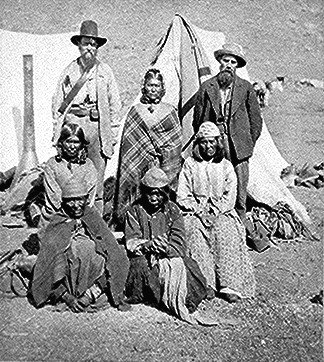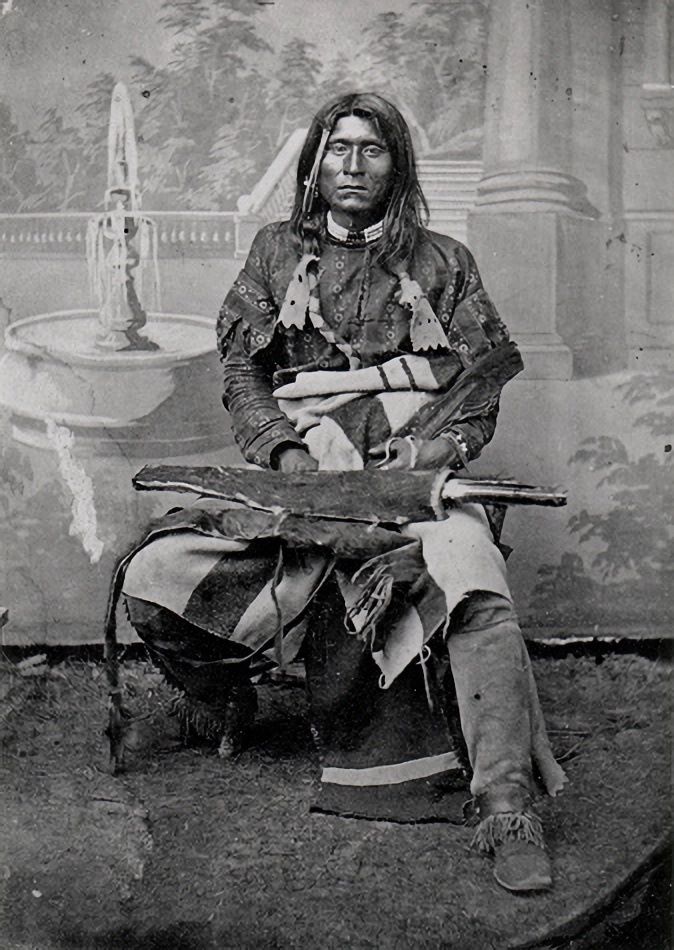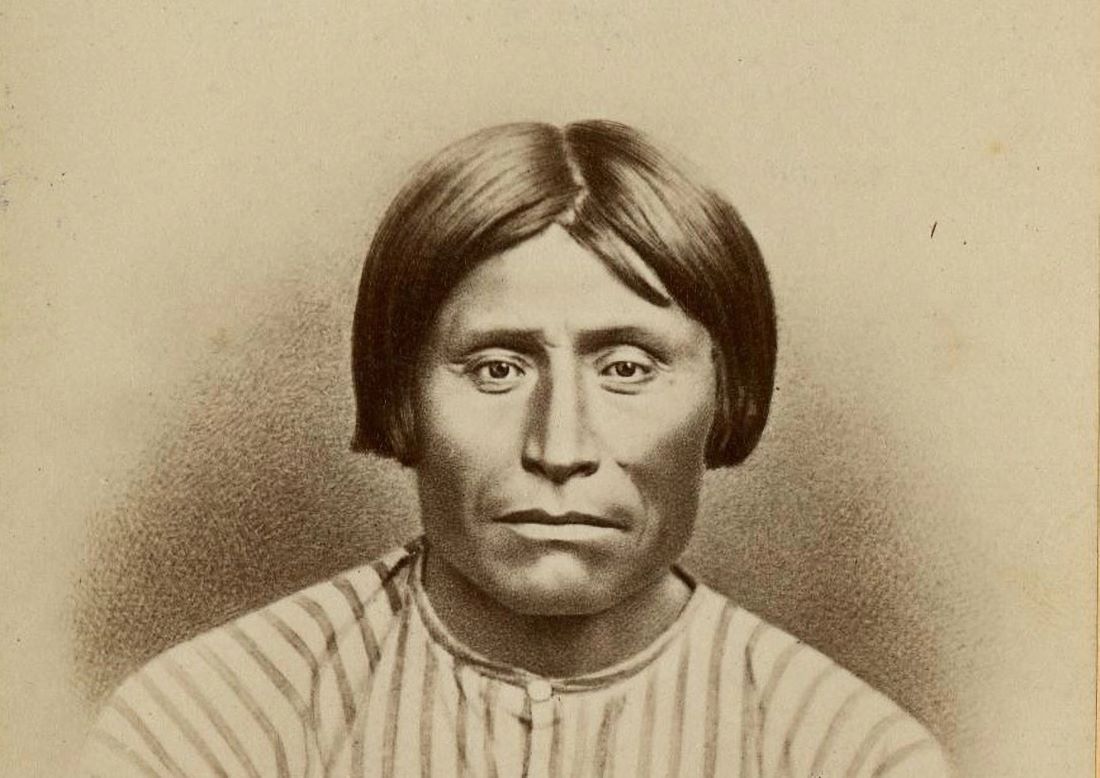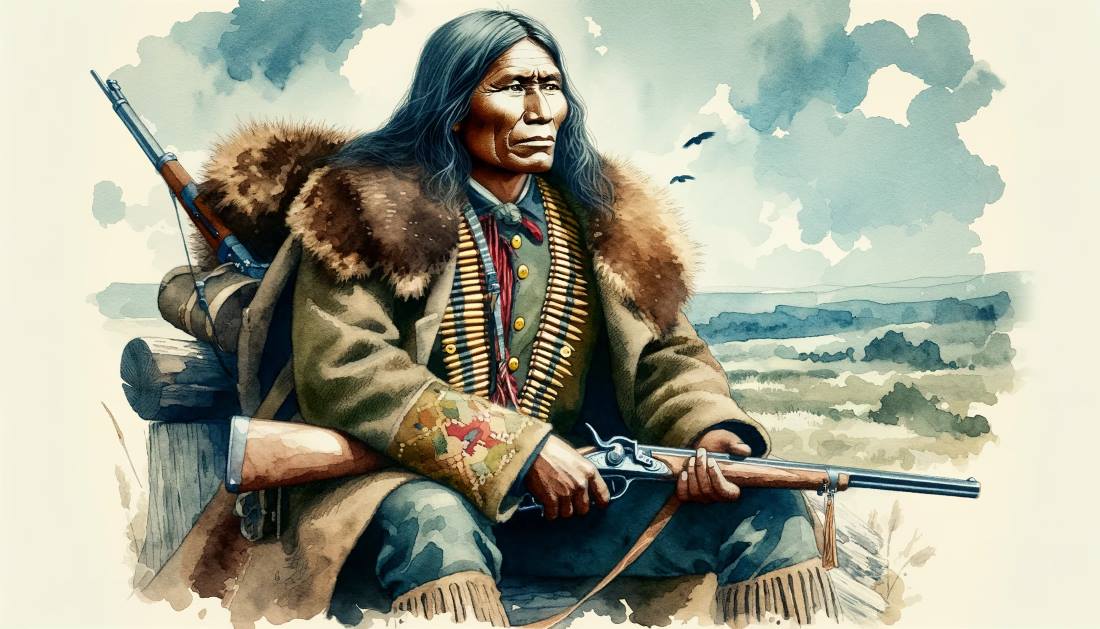Captain Jack, known in his native Modoc language as Kintpuash (circa 1837–1873), was a significant figure in Native American history. As the leader of the Modoc tribe, his leadership was characterized by resilience and a profound connection to their homeland. Kintpuash’s role as a chief became especially crucial during the Modoc War of 1872-1873, a conflict that vividly highlighted the struggles of the Modoc people in defending their ancestral lands against encroachment. This period, marked by both courageous resistance and tragic outcomes, ended with Captain Jack’s capture and execution in 1873, leaving a lasting legacy in the history of Native American battles for sovereignty and justice.
The Modoc Tribe
The Modoc tribe, first mentioned in historical records in the early 19th century, inhabited a region straddling the border between present-day Oregon and California. This area, known for its rugged terrain and abundant resources, provided an ideal environment for the Modoc people, allowing them to develop a unique culture deeply intertwined with the land. Their lifestyle was predominantly hunter-gatherer, relying on the local flora and fauna, which they utilized with profound respect and understanding.

Captain Jack, born around 1837, emerged as a leader within this small yet resilient tribe, which numbered just a few hundred at the time. The Modoc’s strong connection to their land became a central theme in their resistance against displacement. Their fierce determination to protect their homeland was not only a fight for survival but also a testament to their deep-rooted cultural and spiritual beliefs. This unyielding spirit, embodied by leaders like Captain Jack, marked a significant chapter in the history of Native American resistance.
Modocs Meet the Gold Rush
The discovery of gold in California in 1849 marked a turning point for the Modoc people, as the Gold Rush brought a wave of immigrants into their territories. This influx led to increased interactions between the Modocs and the newcomers, significantly altering the tribe’s dynamics. Captain Jack, who earned his nickname by wearing a military-style coat with brass buttons given by a U.S. Army officer, emerged as a figure advocating for a peaceful approach. He promoted trade and dialogue with the settlers around Eureka, California, during the 1840s, a period where he also expanded his familial ties by taking two wives.

As the decade progressed, the escalating influx of settlers and gold seekers intensified the tensions. In an effort to mitigate conflict, another Modoc chief, Schonchin John, agreed in 1864 to relocate his band to a reservation in Oregon. However, this move proved problematic, as it encroached upon the lands of the Klamaths, leading to intertribal tensions. Dissatisfied with the conditions in Oregon and facing the rejection of their request for a separate reservation in California, Captain Jack and his followers found themselves increasingly cornered. This culminated in a fateful encounter on November 28, 1872, when an attempt to forcibly remove the Modocs from their land resulted in a violent clash. Scarfaced Charley’s refusal to surrender his weapon sparked a confrontation that left several dead on both sides, igniting the flames of the Modoc War.
The Modoc War
The Modoc War, a conflict engulfed in internal strife and external pressures, profoundly illustrated the complexities Native American tribes faced during the late 19th century. Captain Jack, a leader known for his preference for peaceful resolutions, found himself at the heart of this turmoil. The early stages of the war were marked by his efforts to negotiate and find a middle ground, despite the growing hostilities and demands for more aggressive action from other Modoc leaders, such as Scarfaced Charley and Hooker Jim. These internal divisions within the Modoc tribe, reflecting a broader struggle between peace and militancy, set the stage for the tragic events that followed.
As the conflict escalated, Captain Jack was increasingly cornered by the demands of both his tribe and the U.S. military. The situation reached a critical point during the Peace Commission meeting in April 1873. Here, under immense pressure and feeling trapped in an impossible situation, Captain Jack makes a decision that dramatically changes his legacy. In a moment of desperation and influenced by the more militant factions within his tribe, he assassinated General Edward S. Canby. This act, starkly contrasting with his earlier peaceful inclinations, marked a significant turning point in the war, leading to intensified military pursuits against the Modocs.
In the following months, the conflict spiraled further, culminating in the capture of Captain Jack. His arrest marked not only the end of the Modoc War but also symbolized the tragic fate of a leader caught between his principles and the harsh realities of his circumstances. The execution of Captain Jack was a poignant reminder of the complexities and challenges that Native American leaders faced during this era, as they navigated the turbulent waters of resistance, negotiation, and survival.

In retrospect, the Modoc War was a microcosm of the broader struggles between Native Americans and expanding Euro-American settlements. The conflict was exacerbated by white prejudice, betrayal within the Indian ranks, rampant greed, and a sensationalist press that often distorted the realities on the ground. The U.S. Army, deploying over a thousand soldiers against a Modoc force that never exceeded fifty-three warriors, suffered significant losses, including seven officers, thirty-nine soldiers, two scouts, and sixteen civilians. The Modoc casualties were equally tragic, with eleven women and seven men killed.
The aftermath saw 155 Modocs, including women and children, forcibly removed to Indian Territory, highlighting the enormous human and financial costs of a war that could have been avoided with more understanding and less aggression. This dark chapter in American history serves as a stark reminder of the devastating consequences of cultural misunderstandings and the failure of peaceful coexistence.
Historical Challenge: Can You Conquer the Past?
Answer more than 18 questions correctly, and you will win a copy of History Chronicles Magazine Vol 1! Take our interactive history quiz now and put your knowledge to the test!

